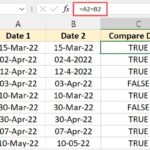Pollution, in its various forms, poses a significant threat to our environment. Whether it stems from industrial activities, agricultural practices, or everyday urban life, understanding the sources of pollution is crucial for effective environmental management. Regulatory bodies like the Environmental Protection Agency (EPA) categorize pollution into two primary types based on its origin: point source and nonpoint source pollution. This distinction is fundamental because it dictates the strategies and regulations needed to mitigate their impacts. Let’s delve into a detailed comparison of these two categories to clarify their differences and implications.
Point Source Pollution: Pinpointing the Origin
Point source pollution, as the name suggests, originates from a single, identifiable source. The EPA defines it as any contaminant that enters the environment from a discernible and confined location. Think of it as pollution discharged through a specific pipe, ditch, or smokestack. This direct and traceable nature of point source pollution makes it relatively easier to monitor and regulate.
Common examples of point source pollution include:
- Industrial Discharge: Factories and industrial facilities often release wastewater containing chemicals and pollutants directly into rivers or lakes through discharge pipes. Industries like oil refineries, paper mills, and chemical plants are typical examples.
- Wastewater Treatment Plants: While essential for sanitation, municipal wastewater treatment plants can also be sources of point source pollution. Effluent discharged from these plants, even after treatment, can contain nutrients and pathogens that impact water quality.
- Smokestacks: Power plants and factories release pollutants into the atmosphere through smokestacks. These emissions can include sulfur dioxide, nitrogen oxides, and particulate matter, contributing to air pollution.
- Confined Animal Feeding Operations (CAFOs): Large-scale animal farms can generate significant amounts of manure, which, if not properly managed, can become a point source of pollution when discharged into waterways.
[Placeholder for image 1: Image of a factory smokestack releasing emissions. Alt text: Factory smokestacks emitting pollution, illustrating a point source of air pollution.]
Nonpoint Source Pollution: The Diffuse and Widespread Challenge
Nonpoint source pollution, in contrast, is far more diffuse and challenging to pinpoint. It arises from widespread sources rather than a single, identifiable location. This type of pollution occurs when rainfall or snowmelt moves over and through the ground, picking up natural and human-made pollutants and carrying them into lakes, rivers, wetlands, and groundwater. The cumulative effect of these dispersed sources makes nonpoint source pollution a significant environmental concern.
Key examples of nonpoint source pollution include:
- Agricultural Runoff: Rainwater flowing over agricultural fields can pick up fertilizers, pesticides, herbicides, and animal waste. This runoff carries these pollutants into water bodies, causing nutrient pollution and harming aquatic ecosystems.
- Urban Runoff: In urban areas, rainwater washes pollutants from streets, parking lots, rooftops, and lawns. This includes oil, grease, heavy metals, pesticides, fertilizers, pet waste, and sediment, all contributing to water pollution.
- Acid Rain: Formed from air pollutants like sulfur dioxide and nitrogen oxides from numerous sources (power plants, vehicles) reacting with atmospheric moisture, acid rain is considered nonpoint source pollution due to its widespread origin and deposition.
- Sediment Pollution: Erosion from construction sites, agricultural lands, and logging operations can lead to sediment runoff into water bodies. This excess sediment can cloud water, harm aquatic habitats, and carry other pollutants.
- Atmospheric Deposition: Pollutants from various dispersed sources can be transported through the atmosphere and deposited onto land and water bodies as dry or wet deposition (rain, snow, fog).
[Placeholder for image 2: Image of agricultural runoff flowing into a river. Alt text: Agricultural runoff carrying sediment and pollutants into a river, depicting nonpoint source water pollution.]
Key Differences Summarized
| Feature | Point Source Pollution | Nonpoint Source Pollution |
|---|---|---|
| Source | Single, identifiable location | Diffuse, widespread sources |
| Identification | Easy to trace and identify | Difficult to pinpoint specific sources |
| Regulation | Relatively easier to monitor and regulate | More challenging to regulate and control |
| Examples | Industrial discharges, smokestacks | Agricultural runoff, urban runoff, acid rain |
| Control Methods | End-of-pipe treatments, permits | Best management practices, land-use planning |
Addressing Both Pollution Types for a Healthier Environment
Both point source and nonpoint source pollution significantly impact environmental health. In the United States, landmark legislations like the Clean Water Act and the Clean Air Act have played a crucial role in controlling both types of pollution. The Clean Water Act primarily focused on regulating point sources, leading to significant improvements in water quality. However, addressing nonpoint source pollution remains a complex and ongoing challenge.
Managing nonpoint source pollution requires a multi-faceted approach, including implementing best management practices in agriculture and urban development, promoting sustainable land use, and raising public awareness about pollution prevention. Effectively tackling both point and nonpoint source pollution is essential for ensuring clean water, healthy ecosystems, and a sustainable future.
By understanding the fundamental differences between point source and nonpoint source pollution, we can better appreciate the complexities of environmental protection and work towards more effective solutions for a cleaner, healthier world.
